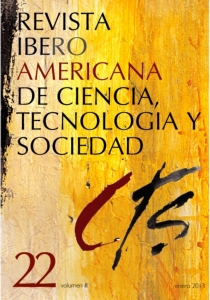The two revolutions of Thomas S. Kuhn
DOI:
https://doi.org/10.52712/issn.1850-0013-664Keywords:
scientific revolution, relational perspective, specific revolutionAbstract
This article proposes an analysis of the book The structure of scientific revolutions from arelational perspective that takes into account all the positions and trajectories of the producers of ideas in the intellectual field, as well as efforts to give priority to certain ideas, in certain historical contexts. Afirst approach shows that, on one hand, the book meant a specific revolution in cultivated groups (universities) of the United States around the key year 1968. But, on the other hand, it also was an extraordinary synthesis of various ideas that had been raised previously by various European schools of thought. Therefore, the author of this paper concludes that the book is also “revolutionary” from a general point of view.
Downloads
References
BARANGER, D. (2004): Epistemología y metodología en la obra de Pierre Bourdieu, Buenos Aires, Prometeo Libros.
BOURDIEU, P. (1975): “La spécificité du champ scientifique et les conditions sociales du progrès de la raison”, Sociologie et sociétés, vol. 7, n° 1, pp. 91-118.
BOURDIEU, P. (2003): El oficio de científico. Ciencia de la ciencia y reflexividad, Barcelona, Anagrama.
BOURDIEU, P. (2008): Homo academicus, Buenos Aires, Argentina, Siglo XXI.
BOURDIEU, P, PASSERON, J. C y CHAMBOREDON Jean-Claude Chamboredon, (1979), El oficio de sociólogo, México, Siglo XXI.
CASSIRER, E. (1923/1910): Substance and function, Chicago, The Open Court Publishing Company.
CHAMPAGNE, P., PINTO, l. y SAPIRO, G. (2007): Pierre Bourdieu, sociólogo, Buenos Aires, Nueva Visión.
COMPLETE DICTIONARY OF SCIENTIFIC BIOGRAPHY (2008): “Kuhn, Thomas Samuel”. Disponible en: http://www.encyclopedia.com/doc/1G2-2830905834.html.
ENCREVE, P. y LAGRAVE, R. M. (2003) : Travailler avec Bourdieu,París, Champs- Flammarion.
GINGRAS, Y. (2010) : Propos sur les sciences,París, Raisons d’agir.
HACKING, I. (2012): “Introductory essay”, The Structure of Scientific Revolutions, 50th anniversary edition, University of Chicago Press.
HORGAN, J. (1991): “Profile: Reluctant Revolutionary: Thomas S. Kuhn unleashed ‘paradigm” on the world”, Scientific American,pp. 40-49.
KUHN, T. S. (1971): La Estructura de las Revoluciones Científicas,México, FCE.
KUHN, T. S. (1975): “Tradition mathématique et tradition expérimentale dans le développement de la physique”, Annales. Économies, Sociétés, Civilisations. 30e année, nº 5, pp. 975-998.
KUHN, T. S. (1983): La tensión esencial, México, FCE.
LORENZANO, C. (2002): “Los ancestros de Thomas Kuhn (Homenaje a Ludwik Fleck)”. Disponible en: http://www.clorenzano.com.ar/epistemologia/fleck.pdf.
MÜLLER-ARMACK, A. (1967): Genealogía de los estilos económicos, México, FCE.
PÉREZ TAMAYO, R. (2012): La revolución científica, México, FCE.
PINTO, L. (2002): Pierre Bourdieu y la teoría del mundo social,México. Siglo XXI.
RINGER, F. K. (2009): “Hacia una historia social comparativa del conocimiento”, en J. Schriewer y H. Kaelble: La comparación en las ciencias sociales e históricas, Barcelona, Octaedro, pp. 197-214.
SANDOVAL ARAGÓN, S. L. (2012): El economista y el sociólogo. Pensamiento relacional como paradigma”, Economía, teoría y práctica,nº 37, segundo semestre, México, (en prensa).
WACQUANT, L. y BOURDIEU, P. (2005) : Una invitación a la sociología reflexiva, Buenos Aires, Argentina, Siglo XXI.
Downloads
Published
How to Cite
Issue
Section
License
Copyright (c) 2024 CC Attribution 4.0

This work is licensed under a Creative Commons Attribution 4.0 International License.
All CTS's issues and academic articles are under a CC-BY license.
Since 2007, CTS has provided open and free access to all its contents, including the complete archive of its quarterly edition and the different products presented in its electronic platform. This decision is based on the belief that offering free access to published materials helps to build a greater and better exchange of knowledge.
In turn, for the quarterly edition, CTS allows institutional and thematic repositories, as well as personal web pages, to self-archive articles in their post-print or editorial version, immediately after the publication of the final version of each issue and under the condition that a link to the original source will be incorporated into the self-archive.











